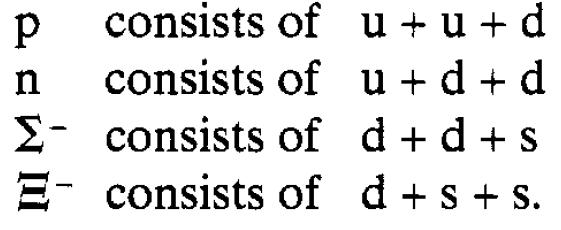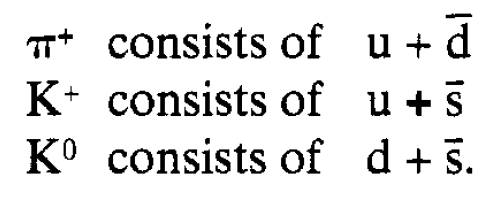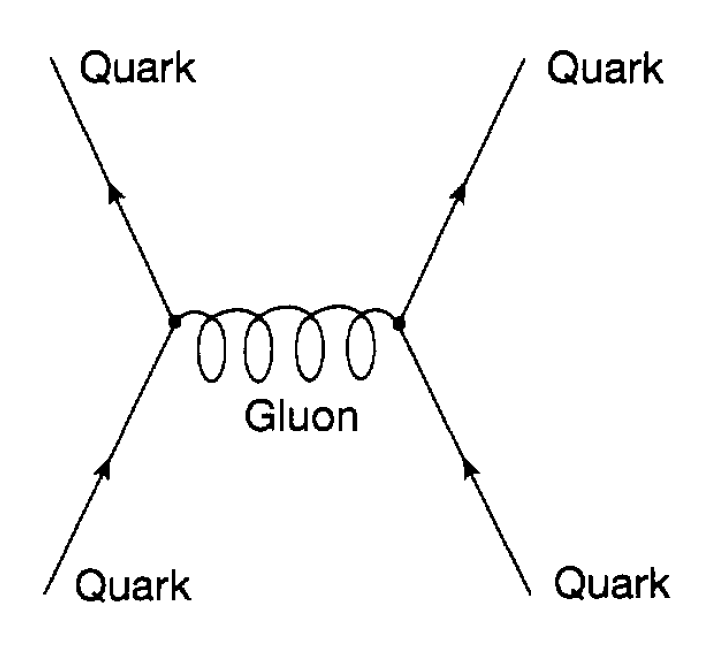
تاريخ الفيزياء

علماء الفيزياء


الفيزياء الكلاسيكية

الميكانيك

الديناميكا الحرارية


الكهربائية والمغناطيسية

الكهربائية

المغناطيسية

الكهرومغناطيسية


علم البصريات

تاريخ علم البصريات

الضوء

مواضيع عامة في علم البصريات

الصوت


الفيزياء الحديثة


النظرية النسبية

النظرية النسبية الخاصة

النظرية النسبية العامة

مواضيع عامة في النظرية النسبية

ميكانيكا الكم

الفيزياء الذرية

الفيزياء الجزيئية


الفيزياء النووية

مواضيع عامة في الفيزياء النووية

النشاط الاشعاعي


فيزياء الحالة الصلبة

الموصلات

أشباه الموصلات

العوازل

مواضيع عامة في الفيزياء الصلبة

فيزياء الجوامد


الليزر

أنواع الليزر

بعض تطبيقات الليزر

مواضيع عامة في الليزر


علم الفلك

تاريخ وعلماء علم الفلك

الثقوب السوداء


المجموعة الشمسية

الشمس

كوكب عطارد

كوكب الزهرة

كوكب الأرض

كوكب المريخ

كوكب المشتري

كوكب زحل

كوكب أورانوس

كوكب نبتون

كوكب بلوتو

القمر

كواكب ومواضيع اخرى

مواضيع عامة في علم الفلك

النجوم

البلازما

الألكترونيات

خواص المادة


الطاقة البديلة

الطاقة الشمسية

مواضيع عامة في الطاقة البديلة

المد والجزر

فيزياء الجسيمات


الفيزياء والعلوم الأخرى

الفيزياء الكيميائية

الفيزياء الرياضية

الفيزياء الحيوية

الفيزياء العامة


مواضيع عامة في الفيزياء

تجارب فيزيائية

مصطلحات وتعاريف فيزيائية

وحدات القياس الفيزيائية

طرائف الفيزياء

مواضيع اخرى
Understanding the Nature of Hadrons
المؤلف:
Roger J Blin-Stoyle, FRS
المصدر:
Physics of Particles, Matter and the Universe
الجزء والصفحة:
p 152
24-5-2016
5339
Understanding the Nature of Hadrons
In just the same way that the atomic nuclei can be understood in terms of different arrangements of two basic particles-the proton and neutron so it might be hoped that the many different elementary particles could be similarly understood in terms of a few basic components. Such a step forward in our understanding did take place in the early 1960s due mainly to the brilliant ideas of Murray Gell-Mann (Nobel Laureate, 1969). He suggested that all hadrons were formed from different combinations of three basic entities which he called quarks (‘...three quarks for Muster Mark...’ James Joyce in Finnegan’s Wake), the quarks being bound together in the particle by an inter quark force. This proposal was substantiated by experiments in which electrons from SLAC were scattered by protons. Just as the scattering of alpha-particles by atoms indicated the presence of atomic nuclei so the scattering of these high energy electrons indicated the presence of three point like entities in the interior of protons. The three quarks, which have corresponding antiquarks, were given the individual names, symbols and properties listed in table 1.1. Here, for the first time we meet particles with one third integral charges. The reason for this is that if quarks are to be components of neutrons and protons then the simplest possibility is to have three of them. Two of them would not give the right spin (in quantum mechanics two spin-½ particles can only lead to an integer spin, whereas neutrons and protons have spin ½). So it was postulated that all baryons consisted of different combinations of these three quarks.
Table 1.1: Quarks and their properties.

Examples of the different compositions are given below for the proton (p), neutron (n), sigma minus (Σ-) and Xi minus (Ξ-).

Simple arithmetic will confirm that each particle has the charge. Similarly, mesons can be understood as consisting of one quark and one antiquark. As just pointed out the combination of two spin-q particles gives an integer spin as required for mesons. Further, since antiquarks have baryon number B = -1/3, it follows that the total baryon number for a meson is 0, also as required. Examples of the quark structure of a few mesons pion plus (π+), kaon plus (K+) and kaon nought (K0) are given below.

It must be stressed here that the three quarks were not introduced on an ad hoc basis but as the basic states of a very elegant mathematical theory of elementary particles known symbolically as SU(3) (standing for ‘the special unitary group in three dimensions’). This theory could account for the obvious grouping of particles such as the neutron and proton and the three types of π-meson, members of these two groups having virtually identical properties as far as the strong interaction is concerned. For example, members of each group have approximately the same mass and only differ in their electric charge. It also predicted larger groupings. For example, the eight baryons constitute one such group. The particles in this group do differ somewhat in their masses and so SU(3) symmetry is obviously not exact. It follows that the three basic quarks must have different masses. For example, the u- and d-quarks will each have masses around one-third of the mass of a neutron or proton, since each contains three quarks, whereas the s-quark must be heavier in order to account for the higher masses of the various .’strange’ baryons. An even larger group containing ten baryons with spin 3/2 was also predicted. One of these baryons the Ω-contained three s-quarks and it was a great triumph for the theory when the Ω- was detected in 1964 with the mass and properties predicted. Since then, however, as accelerator energies have increased, new particles have been discovered which cannot be accounted for in terms of the three basic quarks discussed so far. The theory had to be extended and three further heavier quarks, all with one third integral charges, were introduced. They were allocated ‘flavours’ (analagous to strangeness) referred to as charm (c), bottom (b) and top (t) having the values +1, -1 and +1 respectively, the three original quarks (u, d, s) having the value 0. These flavours, like strangeness, are conserved additively in strong and electromagnetic processes. In terms of theories including these six basic quarks much understanding of elementary particle processes has been achieved. There is another point to consider. Quarks have spin and therefore Pauli’s exclusion principle applies when considering the quantum states of two or more identical quarks. Consider, for example, the Ω- referred to above, consisting of three s-quarks, which, since it has spin 3/2, must all have their spins pointing in the same direction they are all in the same state and this is not allowed by the exclusion principle. To solve this problem it was suggested that quarks have a sort of electric charge, which was called colour charge, and that there were three varieties of colour charge red, yellow and blue. In the Ω- each s-quark was then postulated to have a different ‘colour’ so that they were no longer identical and the exclusion principle was not violated. In this ‘colour’ language, remembering that mixing the three primary colours gives white, they can be said to be in a ‘white’ state. As the theory was developed it transpired that all elementary particles are ‘white’; baryons all contain three differently coloured quarks and mesons all contain quarks and antiquarks whose colours exactly cancel (just as the charges of a particle and its antiparticle cancel). Here it must be stressed again that the three colours are purely a short-hand terminology for quantities in the theory of strong interactions of quarks which play a similar role to electric charge in electromagnetic theory. They are nothing to do with the real colours of everyday life. If this theory of particle structure is correct, it is surprising that no isolated quark has ever been observed. Whilst electrons can be knocked out of an atom, or neutrons and protons out of a nucleus, it proves impossible to knock a quark out of an elementary particle. This implies that the inter-quark force has some unusual features. In particular it must be rather like the force experienced between two entities joined together by a piece of elastic or a spring; the further they are separated the stronger the force pulling them together. This is completely opposite to electromagnetic and strong interaction forces which become weaker as two interacting particles are separated. This peculiar property of the force is referred to as confinement and arises naturally in a theory which has been formulated known as quantum chromo dynamics (QCD), which attributes the force to the exchange of massless entities between quarks and whose existence has been well confirmed experimentally. Like photons, they are gauge bosons having spin 1 and are referred to picturesquely as gluons. The exchange process is shown where the gluon is represented by a ‘coiled spring’ reflecting the nature of the force it produces. Comparison should be made with the photon and pion exchange processes.

Figure 1.1: Gluon exchange between quarks.
Just as the strength of the electromagnetic force due to the exchange of photons is related to the charge e so the strength of the inter-quark force is related to the colour charge. However, there are three of these and, because of this, the symmetry of QCD requires the existence of eight types of gluon. Also, unlike photons which carry no electric charge, gluons carry colour charge. It is this multiplicity of colour charged gluons which leads to the peculiar properties of the attractive inter quark force. Roughly speaking the force is essentially zero when the quarks are extremely close; this is known as asymptotic freedom. It behaves rather like an electrical force, but around 100 times stronger, when quarks are at their typical separations (around l0-15 m) in an elementary particle. Then, for larger separations it behaves like an elastic force becoming increasingly stronger as the separation increases. It is interesting to see what happens when attempts are made to knock quarks out of elementary particles by bombarding them with other high energy particles from an accelerator. Suppose the bombarded particle is a meson (consisting of a quark and an antiquark). The energy given to the component quark means that it is pushed apart from the antiquark, the bombarding energy being converted into potential energy in the 'stretched' inter quark force. For sufficiently high bombarding energy, this potential energy can then be used to create a quark and antiquark, pair. The system now collapses into two quarks and two antiquarks, which then, because of the attractive inter-quark force, join together to form two mesons. At higher energies, even more mesons would be formed and the attempt to obtain an isolated quark continually fails. Similar outcomes result if baryons rather than mesons are bombarded. Gluons also cannot exist alone and the best that can be achieved is to produce, for example, transitory glueballs consisting of several gluons bound together for a short period. The quark theory (QCD) of the strong interaction is now well tested and established and leads to a very full understanding of the properties of baryons and mesons. None the less, much work remains to be done.
 الاكثر قراءة في مواضيع عامة في الفيزياء النووية
الاكثر قراءة في مواضيع عامة في الفيزياء النووية
 اخر الاخبار
اخر الاخبار
اخبار العتبة العباسية المقدسة

الآخبار الصحية















 قسم الشؤون الفكرية يصدر كتاباً يوثق تاريخ السدانة في العتبة العباسية المقدسة
قسم الشؤون الفكرية يصدر كتاباً يوثق تاريخ السدانة في العتبة العباسية المقدسة "المهمة".. إصدار قصصي يوثّق القصص الفائزة في مسابقة فتوى الدفاع المقدسة للقصة القصيرة
"المهمة".. إصدار قصصي يوثّق القصص الفائزة في مسابقة فتوى الدفاع المقدسة للقصة القصيرة (نوافذ).. إصدار أدبي يوثق القصص الفائزة في مسابقة الإمام العسكري (عليه السلام)
(نوافذ).. إصدار أدبي يوثق القصص الفائزة في مسابقة الإمام العسكري (عليه السلام)


















